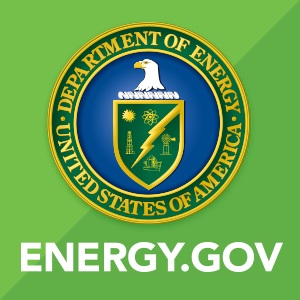Florida Power & Light Company (FPL) announced details about its plans to build substantially more solar energy capacity as part of its ongoing strategy of advancing clean energy while keeping electricity affordable for customers.
Before the end of 2016, FPL intends to build three new solar photovoltaic (PV) power plants that are being designed to cost-effectively complement other major system improvements, which include the retirement of some of the company's oldest fossil fuel-burning units and the continued investment in clean, fuel-efficient, 24-hour power generated from U.S.-produced natural gas and zero-emissions nuclear fuel.
"Over the past decade, we have continuously focused on advancing reliable, affordable, clean energy for our customers," said Eric Silagy, president and CEO of FPL. "In particular, we have been working especially hard to find ways to advance solar energy in Florida without increasing electricity costs, and we have developed what we believe will be a cost-effective plan to triple the amount of solar energy we use to serve our customers before the end of 2016."
Currently, solar power - even the most economical large-scale installation - is generally not yet cost effective in FPL's service area, due in part to its higher costs compared to the company's highly efficient system and low electric rates. However, FPL has identified three uniquely advantaged sites that will each facilitate the cost-effective development of a new, large-scale solar plant. In addition, as the cost of solar PV is projected to decline further later in the decade, FPL is optimistic that it could potentially add even more solar energy generation to complement its natural gas and nuclear resources while continuing to meet the electricity needs of Florida's growing economy and population on a cost-effective basis.
"As the economics of solar power improve in the years ahead, we believe we will be able to harness more and more sunshine cost-effectively, alongside essential, high-efficiency, clean natural gas generation and zero-emissions nuclear power, to continue powering our customers and the state's growing economy with affordable clean energy," Silagy said. "These exciting large-scale solar projects, equivalent to roughly 45,000 typical residential rooftop systems, will bring new tax revenue and several hundred new jobs to rural communities we serve and deliver emissions-free power when the sun is shining to our customers across the state."
Currently serving more than 4.7 million customer accounts across nearly half of Florida, FPL operates a diverse portfolio of energy sources to power the state's growing population and economy. As outlined previously in the company's 10-Year Site Plan filed with the Florida Public Service Commission, FPL anticipates a significant need for additional firm power generation beginning in 2019, when its total number of customer accounts is projected to top 5 million. To meet this need, FPL intends to issue a Request for Proposals (RFP) during the first quarter of 2015 to invite prospective bids. At this time, the company believes that clean, high-efficiency natural gas generation will likely be the most cost-effective energy source to meet this specific need.
Investments in high-efficiency natural gas generation since 2001 have enabled FPL to cut its use of foreign oil by more than 99 percent - from more than 40 million barrels of oil in 2001 to less than 1 million barrels annually today. The company has been strategically phasing out older, less efficient fossil fuel plants and replacing them with new, high-efficiency natural gas energy centers that use approximately one-third less fuel per megawatt-hour.
Since 2001, the effectiveness of these investments has saved our customers more than $7.5 billion on fuel and prevented more than 85 million tons of carbon emissions.
The U.S. Environmental Protection Agency (EPA) calculates that this amount of carbon reduction is equivalent to removing more than 16 million cars from the road annually or switching more than 2 billion incandescent lights to compact fluorescents.
In addition to improvements in fossil fuel and renewable power, FPL successfully completed in 2013 the largest nuclear expansion in recent U.S. history - an investment that is now saving customers approximately $100 million a year in fossil fuel costs without emitting any carbon dioxide or other greenhouse gases.
Unlike many electric utilities across the country, FPL is well-positioned to meet the EPA's targets for reductions in CO2 emissions - with no expected additional costs - thanks in part to the company's investments in nuclear, solar and natural gas.
"There's no simple, silver-bullet solution to the complex challenge of planning to cost-effectively and reliably meet future energy needs. Energy issues involve long-term, fact-based planning and decision-making. FPL's strategy of making smart investments in affordable, clean energy infrastructure is working. We take great pride in the fact that our electric rates have actually decreased in recent years, helping keep our typical residential customer bills the lowest in Florida and well below the national average, while we continue to deliver industry-leading reliability and invest in advancing a system that's already one of the cleanest and most efficient in the country," Silagy said.
FPL's Affordable Clean Energy Strategy: Summary of Key Generation Milestones*
- On Dec. 31, 2014, FPL retired two 1970s-era gas- and oil-fueled generating units in Putnam County (Putnam Plant Units 1 and 2), as planned. The units served FPL customers well for decades, and the timing of their retirement enables cost savings for customers as FPL's modernized system generates cleaner, more fuel-efficient electricity than ever before.
- By the summer of 2015, the new Palm Beach County Solid Waste Authority (SWA) waste-to-energy plant is expected to enter service, doubling the site's renewable energy capacity. FPL buys this renewable energy from SWA and uses it to power all FPL customers via its grid.
- Although large-scale solar PV remains the most economical way to utilize solar energy for FPL customers, the company also recognizes the role of distributed generation. In the coming months, FPL will build the first of several community-based solar installations as part of a pilot program that will be supported by the company and voluntary participation by customers. In addition, FPL continues to work on plans to install commercial-scale arrays at locations to be announced in the near future.
- In mid-2016, the new high-efficiency, natural gas-fueled FPL Port Everglades Next Generation Clean Energy Center is expected to enter service at the site of a former oil-fueled power plant, which was dismantled in 2013. Construction is progressing well, and the project remains on schedule and on budget. This project is the third in a series of three major modernization investments. The first two projects, the FPL Cape Canaveral and Riviera Beach Next Generation Clean Energy Centers, entered service in 2013 and 2014, respectively - ahead of schedule and under budget.
- By the end of 2016, the company expects to add three new large-scale solar power plants. FPL estimates that it will be able to build these facilities cost-effectively for customers due to several factors - in addition to the decreasing cost of solar PV - that include the sites' key characteristics such as their close proximity to existing power transmission lines and electric substations with adequate capacity for the additional generation.
- Clean, high-efficiency natural gas power continues to be the most likely option to meet the need for significant additional firm generation capacity beginning in 2019. To identify the best, most economical generation addition for customers, FPL will solicit proposals from interested outside parties and consider all qualifying bids in comparison with a potential new natural gas energy center that would be located on company-owned property in Okeechobee County.
- FPL continues to take a step-by-step approach to building two additional zero-emissions nuclear units at its existing Turkey Point site. Despite schedule changes announced by the U.S. Nuclear Regulatory Commission (NRC) in August and new timeline restrictions resulting from recent changes to Florida law, FPL continues to work toward bringing the units into service in advance of the 2030 deadline for the state to meet the EPA's pending Clean Power Plan to reduce carbon emissions from power plants.
- As the cost of solar PV continues to decrease, there is strong potential for several additional large-scale solar plants to be built cost-effectively in the next decade. FPL is analyzing potential sites in many parts of its service area.
*Note: The above list does not encompass all projected resource changes in FPL's service territory, including potential generating unit retirements and conversions and changes in purchased power contracts. The company's complete, detailed capacity projections are filed annually with the Florida Public Service Commission and publicly available at both the PSC's website and at FPL.com.
Addition of Three Cost-Effective Large-Scale Solar Power Plants in 2016
FPL has identified three sites with built-in advantages, such as the existence of sufficient transmission and substation infrastructure, which reduce the overall cost of building new solar plants.
In the coming months, FPL intends to present detailed plans to the local communities identified as the most likely locations for new solar plants. The anticipated plants and sites are:
- FPL Citrus Solar Energy Center - DeSoto County, near Florida's first large-scale solar plant, which FPL commissioned in 2009
- FPL Babcock Ranch Solar Energy Center - Charlotte County, in coordination with and with the support of the county and the Babcock Ranch community
- FPL Manatee Solar Energy Center - Manatee County, on the site of an existing fuel-efficient natural gas power plant that FPL operates
Each of the new plants is being designed for roughly 74 megawatts of capacity. With support from the local communities, FPL would begin construction on the plants later this year and complete them by the end of 2016.
These new plants, combined with community-based solar installations and other small-scale arrays that FPL is installing, would total more than 225 megawatts of new solar capacity. This would effectively triple FPL's solar capacity, which currently totals approximately 110 megawatts.
FPL's current solar portfolio includes 75 megawatts at the hybrid FPL Martin Next Generation Clean Energy Center; the 25-megawatt FPL DeSoto Next Generation Solar Energy Center; and the 10-megawatt FPL Space Coast Next Generation Solar Energy Center near NASA's Kennedy Space Center.
Clean, U.S.-produced Natural Gas Generation for Florida's Growing Economy
As outlined in the company's 10-Year Site Plan filed with the Florida Public Service Commission in 2014, FPL projects a need for additional generation beginning in 2019. This projected need for new generation remains after accounting for all of the identified achievable potential conservation that is cost-effective. The current projection is that approximately 1,000 megawatts of firm capacity will still be needed beginning in mid-2019 due to several factors, including the retirement of older, inefficient plants and Florida's growing economy and population.
As part of its effort to meet this need, FPL plans to issue an RFP during the first quarter of 2015 to solicit proposals from interested outside parties. In order to identify the best, most economical generation addition for customers, all qualifying bids will be carefully considered in comparison with a potential new, FPL-operated natural gas-fired combined-cycle plant that would be located on company-owned property in Okeechobee County, Fla.
"U.S.-produced natural gas is critical to keeping our customers free from the past's reliance on foreign oil," said Silagy. "Clean, high-efficiency natural gas energy centers, along with cost-effective energy efficiency programs and zero-emissions nuclear and solar power, ensure FPL can continue to deliver clean, affordable and reliable electricity for customers 24 hours a day, 365 days a year, now and in the future."
Reliable, Low-Cost, Emissions-Free Nuclear Power
Today, FPL's nuclear power plants generate enough electricity to power approximately 1.8 million homes and prevent more than 15 million tons of carbon dioxide emissions every year - the equivalent of taking more than 2 million cars off the road, according to the EPA. In addition, because nuclear fuel prices are low and have remained steady for decades, FPL's nuclear plants are a key part of the company's affordable, clean energy strategy.
Over the past few years, FPL invested more than $3 billion to successfully upgrade each of its nuclear units through one of the most complex nuclear projects in U.S. history. The new nuclear capacity added by the successful project is equivalent to a new medium-sized power plant. This investment, made possible because of Florida's nuclear cost recovery system, is now saving FPL customers an estimated $100 million a year on fuel.
Emissions-free nuclear power remains a critical component of the company's long-term plans, and FPL continues to make progress on the licensing of two new nuclear units at the company's Turkey Point site. These units would generate enough clean energy 24 hours per day to power approximately 1.3 million homes for decades to come, saving FPL customers an estimated $170 billion in fossil fuel costs and preventing approximately 418 million tons of carbon emissions over the initial operating life of the units, the EPA-equivalent of taking 88 million cars off the road.
In August of 2014, the NRC announced a delay in its schedule for reviewing FPL's previously submitted application for a combined operating license for the two new nuclear units, due largely to the agency's resource constraints. This forces an extension of the project timeline by approximately two-and-a-half years. In addition, recent changes to Florida's nuclear cost recovery law prevent certain work from being conducted until the NRC process is complete - causing an additional two-and-a-half year delay to the project timeline.
Despite this, FPL continues to expect that the new zero-emissions units will be built and producing power for its customers in advance of the state's 2030 compliance deadline for the EPA's pending carbon emissions reduction requirements, with the first unit projected to enter service in 2027 and the second to follow in 2028.
"Because we have lived and breathed our clean energy commitment for many years now, FPL is one of the cleanest electric generating companies in the U.S., positioning us well to meet the goals of the EPA's Clean Power Plan," Silagy said. "We are concerned that many other utilities and their customers may be facing potentially billions of dollars in compliance costs; however, we believe our customers will be protected from those potential rate impacts thanks to the affordable clean energy strategy we have been implementing with the support of the Florida PSC and other important stakeholders over the past 15 years."
Florida Power & Light Company
Florida Power & Light Company is the third-largest electric utility in the United States, serving more than 4.7 million customer accounts across nearly half of the state of Florida. FPL's typical 1,000-kWh residential customer bill is approximately 25 percent lower than the national average and, in 2014, was the lowest in Florida among reporting utilities for the fifth year in a row. FPL's service reliability is better than 99.98 percent, and its highly fuel-efficient power plant fleet is one of the cleanest among all utilities nationwide. The company was recognized in 2014 as the most trusted U.S. electric utility by Market Strategies International, and has earned the national ServiceOne Award for outstanding customer service for an unprecedented 10 consecutive years. A leading Florida employer with approximately 8,900 employees, FPL is a subsidiary of Juno Beach, Fla.-based NextEra Energy, Inc. (NYSE: NEE).
Click here to read the full press release.









